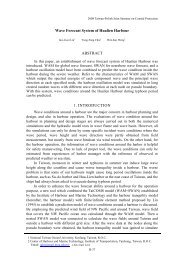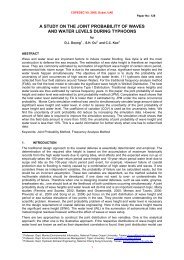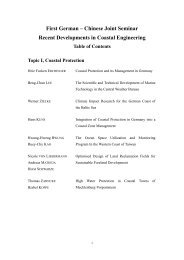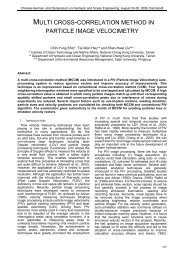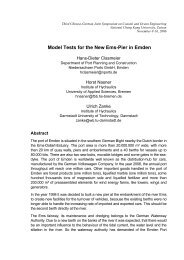03 Application study of shallow water wave model (SWAN)
03 Application study of shallow water wave model (SWAN)
03 Application study of shallow water wave model (SWAN)
Create successful ePaper yourself
Turn your PDF publications into a flip-book with our unique Google optimized e-Paper software.
5. Conclusions<br />
<br />
<br />
<br />
When <strong>SWAN</strong> is implemented in Bohai Sea and the default value <strong>of</strong><br />
<strong>model</strong> is applied to computation, the HS (significant <strong>wave</strong> height)<br />
<strong>of</strong> <strong>SWAN</strong> is much less than the HS <strong>of</strong> measurements.<br />
a: By means <strong>of</strong> analysis <strong>of</strong> defect <strong>of</strong> <strong>SWAN</strong>, we introduce a<br />
parabolic function concerning the friction velocity into the linear<br />
growth term <strong>of</strong> wind growth <strong>model</strong> in place <strong>of</strong> constant<br />
proportionality coefficient (in default, it is constant in <strong>SWAN</strong><br />
<strong>model</strong>) .<br />
b: We conduct four experiments in every wind process to verify the<br />
new formula. The computed results validate our modification in all<br />
<strong>of</strong> the four wind processes, because the computed results <strong>of</strong><br />
amended <strong>SWAN</strong> <strong>model</strong> always are more consistent with the<br />
observational data than results <strong>of</strong> default <strong>SWAN</strong> <strong>model</strong> in every<br />
experiment. This improvement maintains good precision in higher<br />
wind speed and improves the poor results when wind is weak.




